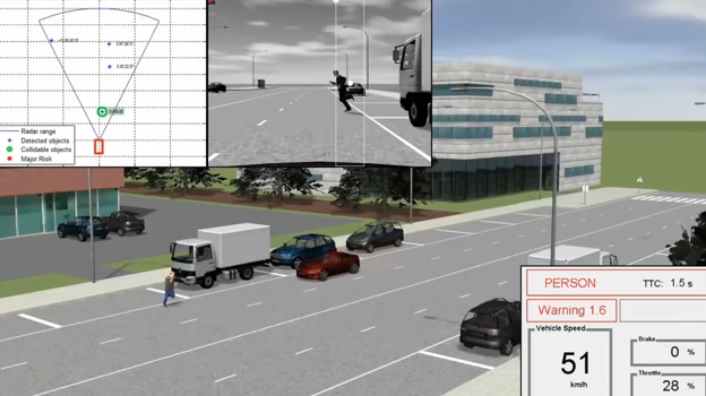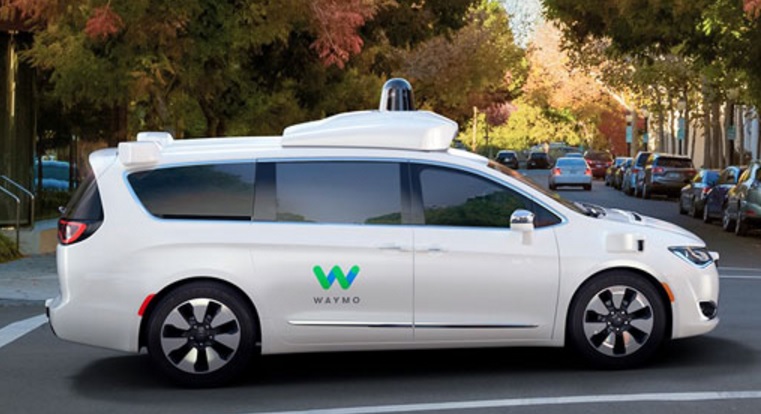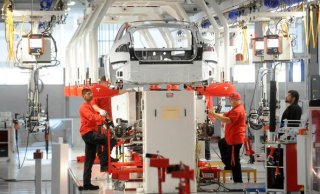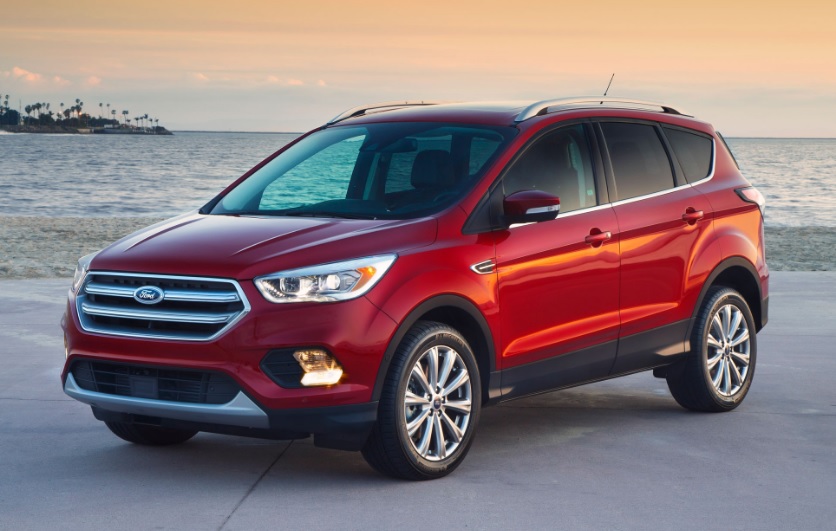Tesla owners will have access to fully automated, Level 5 autonomous electric vehicles sometimes this year. No humans will need to be involved, except for being passengers. That’s according to comments made by CEO Elon Musk a few days ago from a video released at a Chinese AI conference.
 “I remain confident that we will have the basic functionality for level five autonomy complete this year,” Musk said. “I think there are no fundamental challenges remaining for level five autonomy.”
“I remain confident that we will have the basic functionality for level five autonomy complete this year,” Musk said. “I think there are no fundamental challenges remaining for level five autonomy.”
The problem would be: Where could Tesla owners legally ride in their autonomous EV beyond a limited test run — most of which would not allow them to be the ones riding in that test car?
Australia, Canada, China, Germany, New Zealand, the United Kingdom and the US have government-sponsored programs and policies in place for testing and developing AVs. None of these countries have yet allowed these vehicles to be deployed at scale. In the US, 40 states have enacted legislation, or have received governor executive orders, on autonomous vehicles. None of them have allowed them to be driven beyond the testing phase; or in limited applications, such as Waymo’s autonomous rides in Arizona.
As for now, AV activities have been put on hold. After COVID-19 hit hard in March, AV companies such as Argo, Aurora, Cruise, Pony, and Waymo, suspended vehicle testing and operations that involved a human driver. Around the same time, Waymo and Ford released open data sets of information collected during AV tests. The two companies challenged developers to use them to come up with faster and smarter self-driving systems.
AVs are years behind robotics being used in manufacturing plants, and for air and sea drones used by the military and other entities such as NOAA (more on this later).
Carnegie Mellon University has always played a leading role participating in AV test projects. A new study has taken a look at another angle — the connection between AVs and electric vehicles. Researchers from the university recently published a paper in the Nature Energy journal. They found that certain parts of the AV ride cycle can drain car batteries, but fixes made to software and hardware should make fleets of electric AVs possible.
“A bunch of commentators used to suggest the first AVs might have to be gas hybrids,” says Shashank Sripad, a PhD candidate in mechanical engineering at Carnegie Mellon who worked on the paper. “But we believe that, if we want to do electric vehicles, autonomy will be compatible with it.”
That probably referred to the Toyota Priuses being used in the early stages of the study that was conducted near Google’s (now Alphabet’s) corporate campus in Mountain View, Calif. More recently with Waymo, that’s been taken over by the Chrysler Pacifica minivan.
Automakers are split on their support for Level 4 AVs, and what type of powertrain would be best to use. Ford plans to transition over to battery-powered self-driving cars, says an AV spokesperson for Ford. But if the company can stay on track and hit its original goal of rolling out an AV for service by 2022, it will be rolling out self-driving gas-electric hybrid vehicles.
Automakers have made big commitments to AVs in investments and research studies that will continue. Some of the more memorable deals include General Motor’s $1 billion acquisition of Cruise, Uber buying Otto for $680 million, Ford’s $1 billion Argo Ai investment, and Intel acquiring Mobileye for $15.3 billion.
Five years ago, several companies including Nissan and Toyota promised self-driving cars by this year, but that’s being delayed. AV stakeholders have started to revise their marketing and event messages on where it’s all going for now. Level 4 autonomous will be it for now.
Robotics are already here in production and assembly lines for several automakers and in other industries, with COVID-19 making the topic much more relevant with worker safety being factored in. Meat and poultry workers have been hit hard. In April and May, more than 17,300 meat and poultry processing workers in 29 states were infected and 91 died, according to the U.S. Centers for Disease Control and Prevention. Plant shutdowns started in late April.
Tyson Foods Inc. assembled a team, including designers once employed in the auto industry, working on a deboning system that could make more efficient and safe the procedures carried out in Tyson plants. The team is developing an automated deboning system designed to handle some of the roughly 39 million chickens slaughtered, plucked and sliced up each week in Tyson plants.
The company has invested about $500 million in technology and automation. CEO Noel White said those efforts likely would increase in the aftermath of the pandemic. It’s been chaotic for meat producers, grocery stores, and fast-food chains to keep the product in stores — with Americans having high expectations for buying meat.
On the drone side of the equation, the National Oceanic and Atmospheric Administration (NOAA) is launching a fleet of 30 gliders to study how the ocean affects hurricanes. It started in 2014 with two gliders used for tracking and measuring huge storms approaching coastal areas.
“We have gliders that have gone through two or three hurricanes already,” explained Gustavo Goni, a lead scientist at the Atlantic Oceanographic and Meteorological Laboratory in Miami, which is run by NOAA. “They are robust. They don’t even care. Some of them have even been in fights with sharks. We know this because we find sharks’ teeth in gliders when we recover them.”
The past six years has involved building up the floating, sensor-packed units. The first part was figuring out how to get them funded and set up to be sea worthy and long lasting. Then it had to train technicians on how to equip and use them.
Delivery drones have been another application for robotics, used by companies such as Workhorse Group and Amazon. Allowing human beings to go along for the rides in AVs will have to take a lot longer to work out safety, legal, and risk management issues.

 driving car technology. The federal judge in San Francisco hearing the trial has excluded Waymo’s damages expert, Michael Wagner, from the case; and has restricted use of financial evidence at the trial, according to a docket entry. Waymo claims that it has received damages worth about $1.9 billion in losses. Uber has denied using intellectual property that had allegedly been stolen by former Waymo engineer Anthony Levandowski. Waymo responded to the judge’s decision with a statement that it could still pursue full damages using “the same documents” relied upon by Wagner.
driving car technology. The federal judge in San Francisco hearing the trial has excluded Waymo’s damages expert, Michael Wagner, from the case; and has restricted use of financial evidence at the trial, according to a docket entry. Waymo claims that it has received damages worth about $1.9 billion in losses. Uber has denied using intellectual property that had allegedly been stolen by former Waymo engineer Anthony Levandowski. Waymo responded to the judge’s decision with a statement that it could still pursue full damages using “the same documents” relied upon by Wagner. watched Model 3. Perbix, a maker of automated machines used for manufacturing, has been acquired by Tesla after nearly three years of working with the electric carmaker. Tesla has declined to disclose the cost of the acquisition and other details. Tesla will be expanding Perbix’ operations in the Minneapolis area, where the supplier is based. Tesla CEO Elon Musk has recently been making comments about the automation challenges holding up hitting the production timeline that had originally been set for the $35,000 Model 3. In other news, Jon Wagner, Tesla’s director of battery engineering, has left the company and is launching a battery and powertrain startup in California.
watched Model 3. Perbix, a maker of automated machines used for manufacturing, has been acquired by Tesla after nearly three years of working with the electric carmaker. Tesla has declined to disclose the cost of the acquisition and other details. Tesla will be expanding Perbix’ operations in the Minneapolis area, where the supplier is based. Tesla CEO Elon Musk has recently been making comments about the automation challenges holding up hitting the production timeline that had originally been set for the $35,000 Model 3. In other news, Jon Wagner, Tesla’s director of battery engineering, has left the company and is launching a battery and powertrain startup in California. diverting resources to help bring Puerto Rico back through battery production to help the island recover from hurricane devastation. Residents have been going without electricity. Tesla was below its production target to build more than 1,500 Model 3 units in the third quarter. The company had just delivered around 220 Model 3 sedans and produced 260 during the quarter. Earlier this week Tesla reported that “production bottlenecks” had left it behind the planned ramp-up for the Model 3.
diverting resources to help bring Puerto Rico back through battery production to help the island recover from hurricane devastation. Residents have been going without electricity. Tesla was below its production target to build more than 1,500 Model 3 units in the third quarter. The company had just delivered around 220 Model 3 sedans and produced 260 during the quarter. Earlier this week Tesla reported that “production bottlenecks” had left it behind the planned ramp-up for the Model 3. Max Energi plug-in hybrid. Ford has been disappointed with the C-Max Energi’s sales performance, though it has been doing a little better lately. Ford has been playing with the idea of a PHEV Escape for about a decade, having tested out a small fleet. Hybrid versions of competitors are out there with the Toyota RAV4 and Nissan Rogue, and an expectation that Honda will bring out a hybrid CR-V.
Max Energi plug-in hybrid. Ford has been disappointed with the C-Max Energi’s sales performance, though it has been doing a little better lately. Ford has been playing with the idea of a PHEV Escape for about a decade, having tested out a small fleet. Hybrid versions of competitors are out there with the Toyota RAV4 and Nissan Rogue, and an expectation that Honda will bring out a hybrid CR-V.